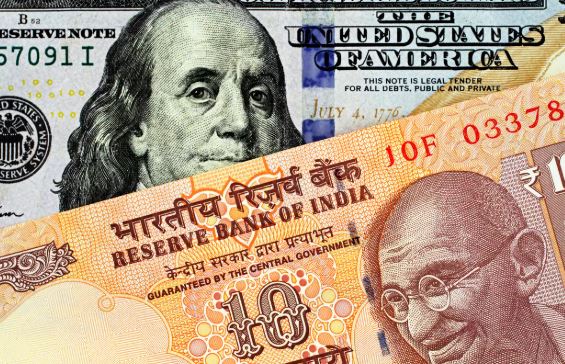New Delhi : My first journey from India to foreign lands began in 1952 when I boarded the Italian passenger ship MV Neptunia. My destination was London. The ship first berthed at Aden and the passengers came ashore, so did I, to see the place and do some shopping. I was carrying Pounds sterling and Indian rupees.
The shopkeepers wanted payment in rupees, avoiding sterling and no one mentioned the US dollar. I found the same story in Port Said and crossing Suez at Port Suez. Arriving in Europe I found in Switzerland that rupee was quoted in top banks as 1 India Rupee = 1 Swiss Franc.
The dawn of India’s independence saw Rupee at par with US Dollar i.e one rupee was equal to one dollar. The tragedy was the British government had linked the rupee to sterling at a disadvantageous rate of exchange to the rupee. That government had given a lethal blow to the rupee on September 24, 1931 when it removed the goldlink of the rupee and linked it to the worthless pound sterling. That single act of the colonial power resulted in rupee depreciating as it was now linked to a depreciating currency, the Pound sterling.
India inherited over 1300 million Pounds sterling in its reserves at the time of independence. Rupee was still a strong currency for independent India faced no external borrowings. However, independent India’s government was a succeeding government and bound by the obligations of British-ruled India. Instead of breaking its link with the sterling, independent India’s government tried to impress upon the British Government not to devalue sterling. Should India have turned its sterling balances into US dollars at the time is a question that haunts many till today? We lost heavily as later events proved.
Then came the shock when the British government devalued Pound sterling on September 21, 1949. All along, instead of delinking itself from sterling, India had been trying to impress upon the British not to devalue the sterling. With the deed done by the British in devaluation, the pound was now worth US $ 2.8 from 4.03. India lost heavily and the dollar became now worth four rupees and thirteen annas (equals Rs. 4.65). Our reserves were naturally hit in terms of dollars as most buying by India from abroad was in US dollars. Hardly any country accepted weak sterling. But rupee somehow still maintained its strength. It was this power of the rupee that I found in my first travel abroad in 1952.
How many in India’s young of today can say the Indian rupee was the official currency in the countries of the Gulf viz Oman, Qatar, Kuwait, Bahrain and the countries that formed UAE. Indian Rupee was the common currency between India and these nations, till gold smugglers due to India’s license permit raj played havoc with the Indian rupee.
Gold smuggled into India from Dubai could be legitimately paid in Indian rupees. Reserve Bank of India then issued special Gulf rupee in 1959 to fight the smugglers. This Gulf rupee was at par with the rupee in India. However, by 1970 the demise of Indian rupee came in the Middle East. India from now on had to buy oil in US dollars.
The downward trend for the rupee in post-independence India started with reckless borrowings. All this because the country had given up on the market economy and adopted a Fabian socialist economy. The country later decided to adopt a socialist pattern of society which in fact meant communist-style and that brought in license permit raj and corruption.
By 1990 the country was facing serious problems in repaying the loans and had to mortgage part of its gold reserves. However, in 1991 India finally woke up under pressure from the World Bank. The country was not able to get any more loans. As desired by the World Bank, the rupee was devalued further, parts of the socialist economy given up and market economy adopted. Thus began the liberalisation of the Indian economy. We should have gone straight back to the market economy. The rupee was now trading in the open market at around Rs.40 to a dollar while the exchange rate was Rs. 21.00 to a dollar.
Another killer for the rupee has been the rate of inflation since independence, more so since the late fifties and then following the wars of 1962, 1965 and 1971. Experts have estimated that between 1960 and 2020 the average inflation rate works out at 7.44 per cent, enough to kill the buying power of the rupee.
The tragedy today is that the rupee which was one to one dollar at independence 73 years ago is today seventy-five rupees to a dollar. It is almost a decline of 75 times. Tragic.
Can we go on like this? Certainly not. Faced as we are today with a huge crisis of COVID-19, if the country does not take bold steps to revive the economy to a booming level, the nation could face serious unemployment and high inflation resulting in further downfall of the rupee. It could also lead to civil unrest if people’s purchasing power falls. It can be checked.
The government needs to take bold steps in changing the direction of the economy to market economy which can attract inflow of investments and more so now that many companies are looking to exit China. Given the will, India can do it. Rupee can still be saved and must be saved to protect our people.
The author of this Opinion piece is the Chairman of ANI, Mr Prem Prakash. (ANI)





